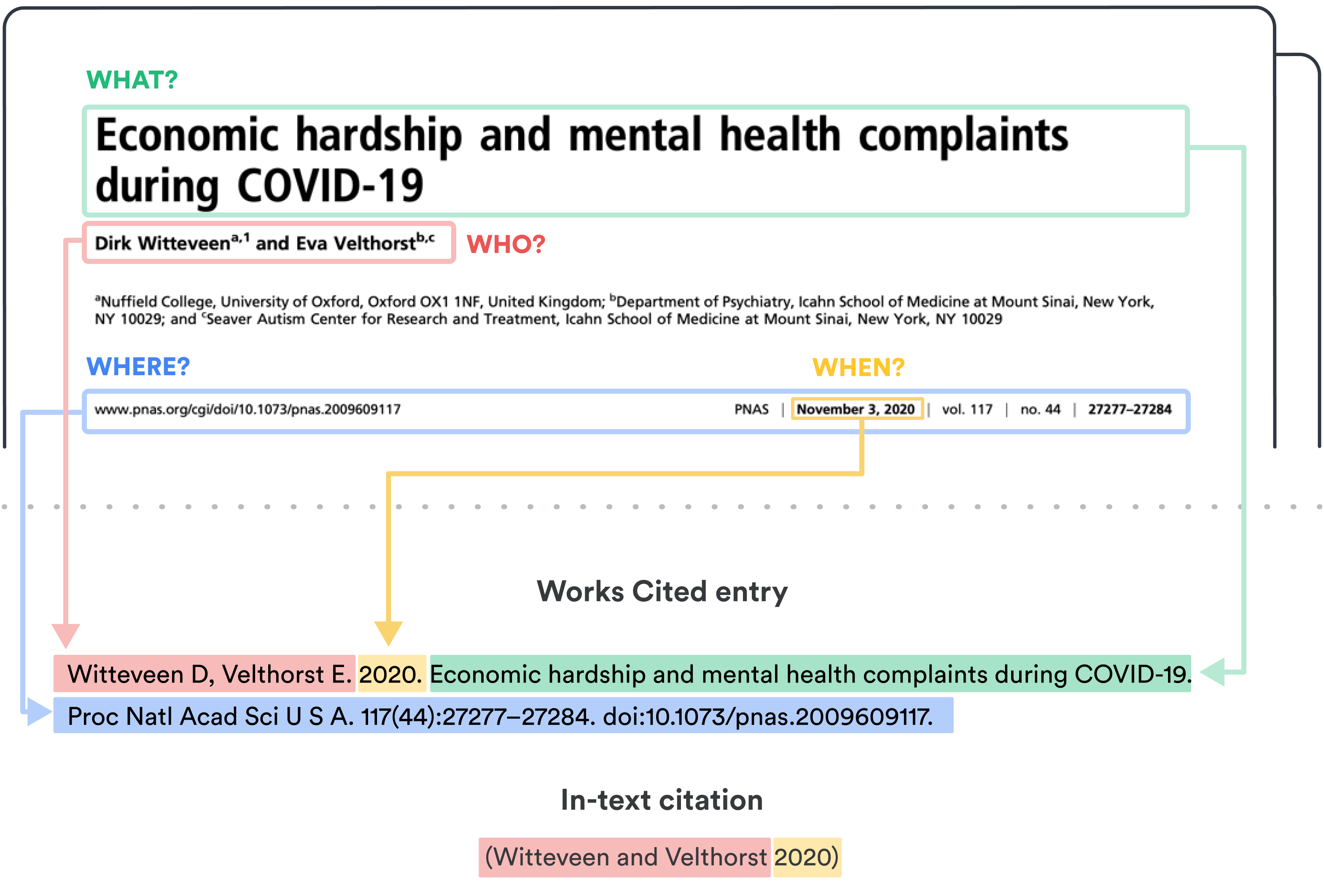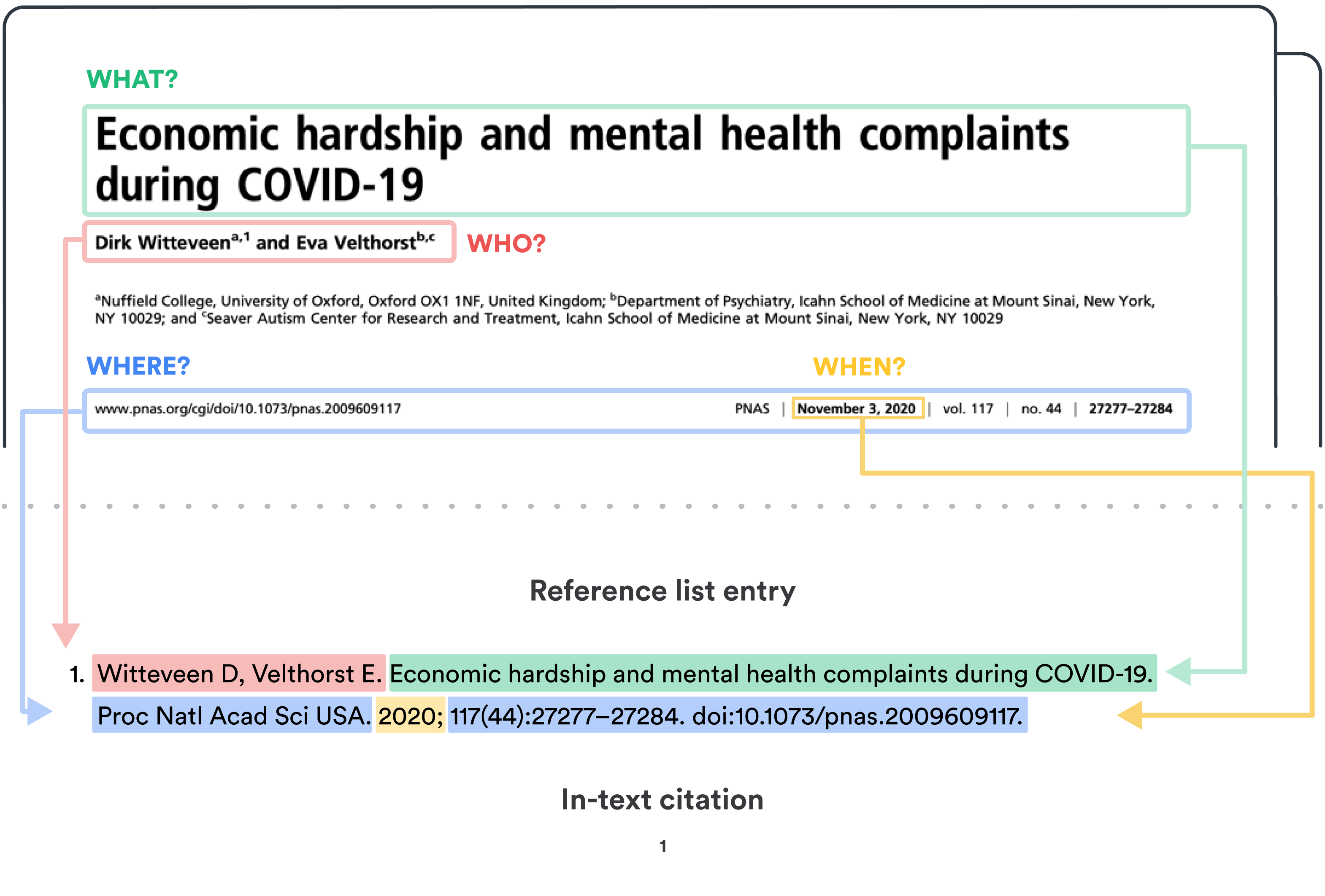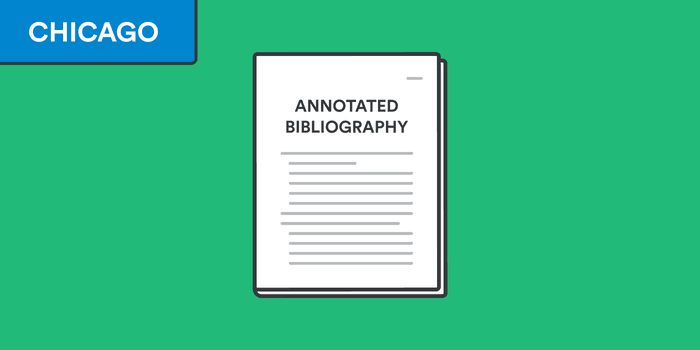BibGuru CSE Citation Generator
Cite websites, books, articles, ...

Stress-free and accurate citations with the BibGuru CSE citation generator
| 🚀 Fast | 👌 Simple and intuitive interface |
| 🎓 Cite in CSE & many other styles | 🥇 Most accurate citation data |
Getting citations and reference lists done correctly can be very confusing and time-consuming. We have created BibGuru to help you focus on the content of your work instead of worrying about how to complete your reference list correctly. We believe that students should not waste their time entering data manually or lose grades on incorrect bibliographies.
BibGuru is a simple and fast CSE citation generator specifically designed for students. Its powerful search bar allows you to search for books, websites, and journal articles and add them directly to your bibliography. Start citing here:
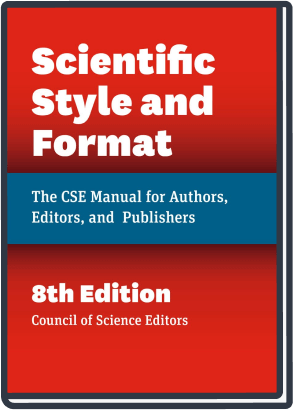
I want to cite a ...
The ultimate guide to citing in CSE
CSE style was developed by the Council of Science Editors (CSE), a US-based nonprofit organization that supports editorial practice among scientific writers. The CSE publishes a style guide for scientific papers: The CSE Manual. The CSE Manual is currently in its 9th edition. CSE style originated in the 1960s and is currently used in many fields of study in both the life sciences and physical sciences.
If you are not sure which citation style to use in your paper, ask your instructor. There are many different citation styles, and using the style your instructor or institution has established correctly can have a positive impact on your grade.
In-text citations in CSE
The CSE style has three systems to cite sources in-text:
- Name-Year (N-Y) system: The author’s surname and year of the publication are placed in parentheses in the text e.g. (Rode 2012). The reference list is ordered alphabetically by author name.
- Citation-Name (C-N) system: Superscript numbers are used to identify in-text citations. In the alphabetized reference list, each numeral corresponds with a unique reference.
- Citation-Sequence (C-S) system: Superscript numbers are used to identify in-text citations. In the reference list, sources are numbered sequentially by the order in which they appear in the text (this differs from the C-N system because they might not be in alphabetical order by author).
These abbreviated references are called in-text references. They refer to a list of full references at the end of the document.
Which of the three citation systems above you use will determine the order of references at the end of your document. These end references essentially have the same format in all three systems. One exception is the placement of the date of publication in the name-year system. Ask your instructor which of the three systems to use in case you are unsure.
CSE reference list - Name-Year system
See below the format and examples for the most popular reference types in the name-year system:
An example of an CSE Name-Year reference page made with BibGuru's CSE citation generator:
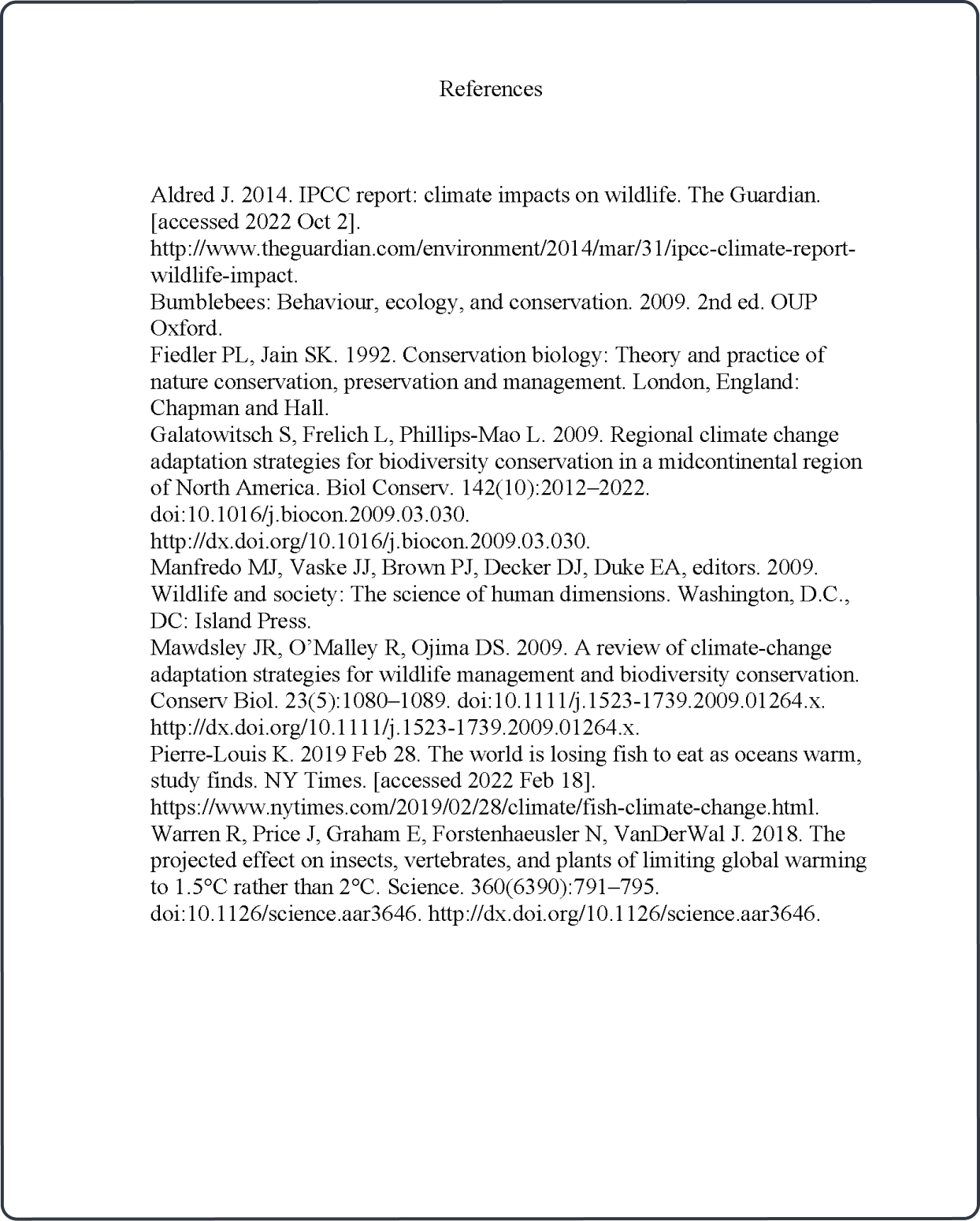
Citation-Sequence and Citation-Name system
The citation-sequence and citation-name systems are identical except for the order of references. In both systems, numbers in the text refer to references in the reference list.
In the citation-sequence system, the end references are listed in the order in which they appear in the text. Once a reference is numbered, the same number is used for all following in-text citations in the same document, e.g. if Meyer is the first mentioned in-text, their work will be number 1 in the end references and also in all following in-text references.
In the citation-name system, references in the reference list are listed alphabetically by author. Multiple works by one author are listed alphabetically by title. The end references are numbered in alphabetical order and the number assigned to an author in the reference list is then used for the in-text citations, regardless of the order in which they appear in the text. So, if a work by Meyer is number 43 in the reference list, each in-text reference to Meyer will also be number 43.
See below for the format and examples of the most popular reference types in the citation-sequence and citation-name systems:
An example of an CSE Citation-Name reference page made with BibGuru's CSE citation generator:
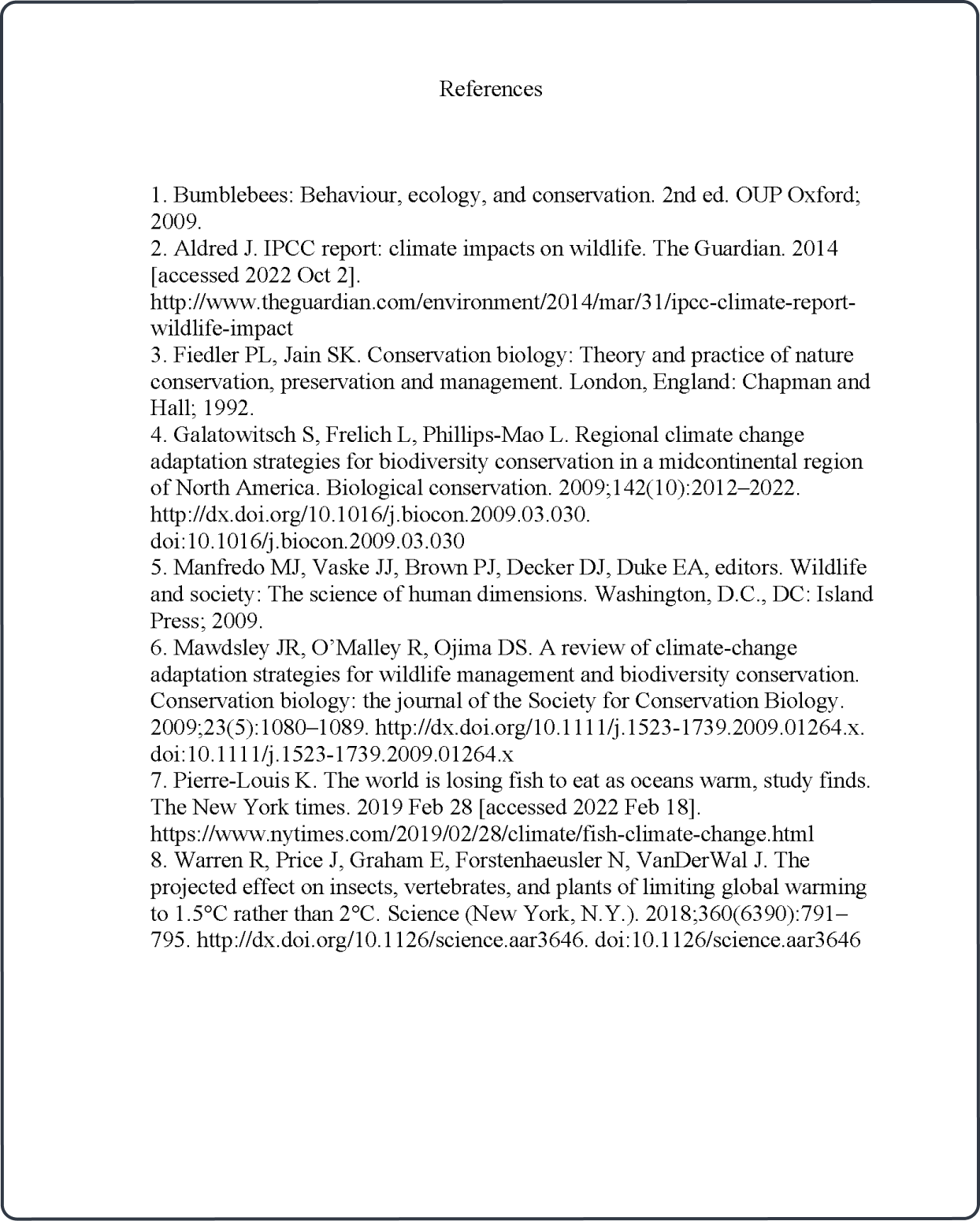
While all the specific rules and variations of CSE citation style might sound very complicated, you don't need to worry about getting them wrong with BibGuru. Use our CSE citation maker to create the fastest and most accurate CSE citations possible.
Helpful Resources
From our blog
FAQs
🐙 What does CSE stand for?
CSE stands for Council of Science Editors, formerly known as Council of Biology Editors, CBE. It is a US-based non-profit organization supporting editorial practice among scientific writers. The CSE was established in 1957 by the National Science Foundation and the American Institute of Biological Sciences. The CSE publishes a style guide for scientific papers, the CSE Manual.
🏈 What is the CSE style used for?
The Council of Science Editors (CSE), a US-based non-profit organization supporting editorial practice among scientific writers publishes a style guide for scientific papers: The CSE Manual. The style is used in many fields of study including the life sciences and physical sciences.
📻 Does the CSE style use footnotes?
The CSE style has three systems to cite sources. The Name-Year system uses in-text citations. In the Citation-Name system and the Citation-Sequence system, superscript numbers are used in-text to identify citations, corresponding with references in the reference list. Those are similar to footnotes but different in that they are not listed separately but integrated into the text.
🎤 How do I cite an interview in CSE?
Interviews and other forms of unpublished personal communications (for example emails) are not included in the reference list in the CSE style. Instead, they should be cited in parentheses within the text of your paper.
📀 What are the citations called that are listed at the end of a CSE paper?
The reference list (or bibliography) at the end of your CSE paper can be titled "References" or "Cited References". The arrangement of those references depends on which of the three style systems you picked for the citations of your paper.
